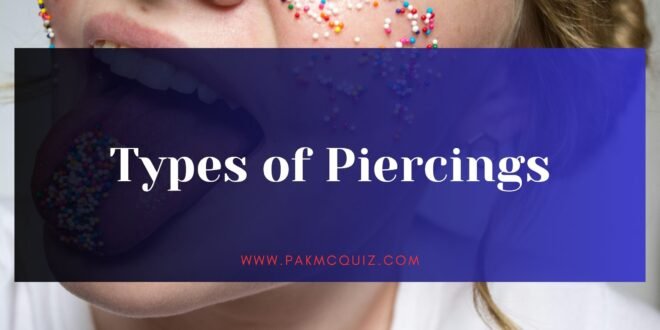Piercings have been a form of self-expression and cultural significance for centuries. From earlobes to more intricate body piercings, this art form allows individuals to showcase their personality and style. However, getting a piercing is not just about aesthetics; it requires careful consideration, proper aftercare, and an understanding of the healing process. In this comprehensive guide, we’ll explore various types of piercings, aftercare tips, and healing times to help you make informed decisions and enjoy your new piercing safely.
Table of Contents
Types of Piercings
1. Ear Piercings
Ear piercings are the most common and widely accepted form of piercings. They include:
- Lobe Piercing: The standard earlobe piercing is the most popular and least painful.
- Helix Piercing: Located on the upper cartilage of the ear.
- Tragus Piercing: Situated on the small piece of cartilage in front of the ear canal.
- Daith Piercing: Placed through the innermost cartilage fold of the ear.
- Industrial Piercing: Involves two holes in the upper ear cartilage connected by a single barbell.
2. Facial Piercings
Facial piercings can range from subtle to bold, depending on your preference:
- Nose Piercing: Includes nostril and septum piercings.
- Eyebrow Piercing: Placed through the eyebrow ridge.
- Lip Piercing: Can be done on the upper or lower lip, including labret and Monroe piercings.
- Tongue Piercing: Involves piercing the tongue, usually in the center.
- Cheek Piercing: Also known as dimple piercings, placed on the cheeks.
3. Body Piercings
Body piercings are more diverse and can be placed on various parts of the body:
- Navel Piercing: Located around the belly button.
- Nipple Piercing: Placed through the nipple.
- Surface Piercings: Done on flat areas of the body, such as the collarbone or wrist.
- Genital Piercings: Include piercings on the male and female genitalia, such as Prince Albert and Christina piercings.
Piercing Aftercare Tips
Proper aftercare is crucial for preventing infections and ensuring a smooth healing process. Here are some essential aftercare tips:
- Clean the Piercing Regularly: Use a saline solution or a recommended cleaning product to clean the piercing site twice a day.
- Avoid Touching the Piercing: Keep your hands off the piercing to prevent introducing bacteria.
- Rotate the Jewelry: Gently rotate the jewelry to prevent it from sticking to the skin, but only if advised by your piercer.
- Avoid Irritants: Stay away from alcohol, hydrogen peroxide, and harsh soaps that can irritate the piercing.
- Be Mindful of Clothing: Wear loose-fitting clothing to avoid friction and irritation, especially for body piercings.
- Follow Your Piercer’s Instructions: Adhere to any specific aftercare instructions provided by your piercer.
Healing Times for Different Piercings
Healing times vary depending on the type of piercing and individual factors. Here’s a general guide:
- Earlobe Piercing: 6-8 weeks
- Cartilage Piercing (Helix, Tragus, Daith): 3-12 months
- Nose Piercing: 2-4 months
- Eyebrow Piercing: 6-8 weeks
- Lip Piercing: 2-3 months
- Tongue Piercing: 4-6 weeks
- Navel Piercing: 6-12 months
- Nipple Piercing: 3-6 months
- Genital Piercing: 4-6 weeks to several months
Potential Complications and How to Avoid Them
While piercings are generally safe, there are potential complications to be aware of:
- Infection: Signs include redness, swelling, pain, and discharge. Maintain proper aftercare to prevent infections.
- Allergic Reactions: Some individuals may be allergic to certain metals. Opt for hypoallergenic materials like surgical steel or titanium.
- Scarring: Poor aftercare or trauma to the piercing site can lead to scarring. Follow aftercare instructions carefully.
- Migration and Rejection: The body may push out the jewelry, especially with surface piercings. Choose a reputable piercer and follow aftercare guidelines to minimize this risk.
- Nerve Damage: Improper piercing techniques can cause nerve damage. Ensure your piercer is experienced and uses sterile equipment.
Conclusion
Piercings are a beautiful way to express yourself, but they require careful consideration and proper aftercare. By understanding the different types of piercings, following aftercare tips, and being aware of potential complications, you can enjoy your new piercing safely and stylishly. Remember, patience and diligence are key to ensuring a successful and hassle-free piercing experience.




